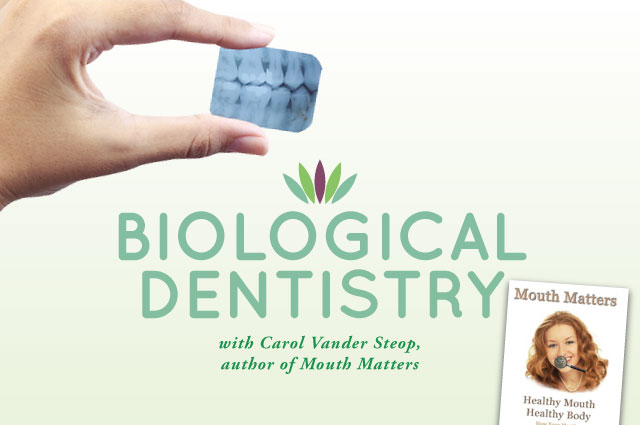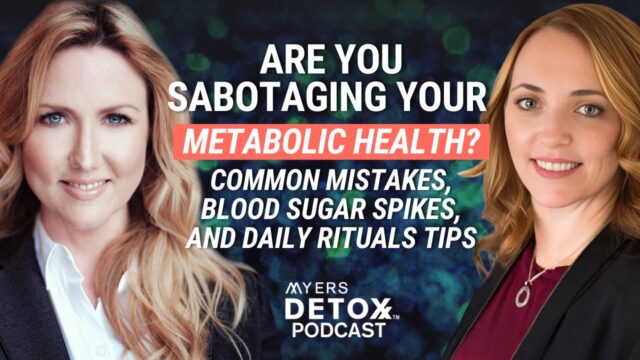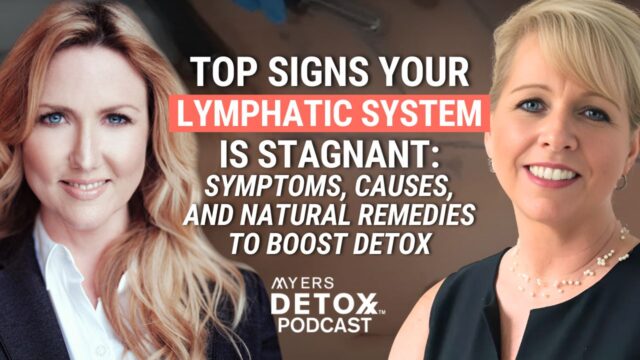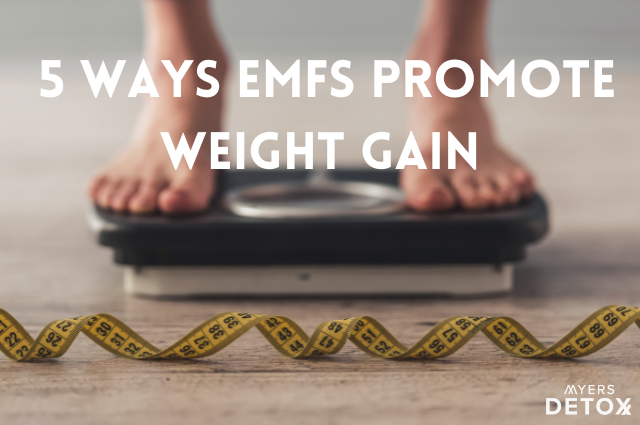Carol Vander Steop, of Mouthmattersbook.com, talks to me about biological dentistry and myofunctional therapy. Her book, Mouth Matters, is a fantastic book about how our oral health profoundly affects our overall health.
Transcript
Click here to view the full transcript for #22 Biological Dentistry with Carol Vander Steop.
In this interview, we will be talking about all kinds of hot topics in biological dentistry, including:
- Mercury amalgam fillings,
- The dangers of root canals,
- Myofunctional therapy,
- And much more.
What is Biological Dentistry?
Biological dentistry combines the techniques and artistry of general dentistry with a focus on the implications that oral health has on the entire body. A biological dentist appreciates that the diseases and materials in your mouth can have lasting, negative affects on other systems in your body. Biological dentists also work with other like-minded health care providers to assess the compatibility of dental materials, to provide nutritional support, and, if needed, to provide detoxification from the damaging affects of oral toxins. The biological dentist keeps your whole health in mind, not just the condition of your teeth and mouth. Though more conventional dentists and physicians are beginning to appreciate the relationship between oral disease and physical illness, only biological dentistry is rooted in a truly holistic, whole-body approach to health and healing. Some simple ways you can know if your dentist has a biological approach to oral health care are as follows. A biological dentist:
- Combines the best clinical practice with traditional, natural healing,
- Aims to prevent and cure illness, not just treat symptoms.
- Acknowledges the wisdom of the body and its self-healing mechanisms
- Prefers therapies that support the body’s natural abilities, not those that attempt to override them
- Never uses mercury (silver amalgam) fillings
- Follows protective protocols when removing mercury fillings
- Offers biocompatibility testing for dental materials
- Does not use fluoride
- Practices biocompatible gum therapy
- Has equipment to sterilze instruments without toxic chemicals and to prevent waterline biofilms
- Uses digital x-ray technology to significantly reduce the harmful affects of radiation
- Works in conjunction with other allied health professionals (MDAs, nauturopaths, nutritionists, etc.)
What is Orofacial Myofunctional Therapy?
Myofunctional therapy is used to correct thumb or finger sucking habits, incorrect tongue resting posture, tongue thrust swallowing patterns, open mouth rest posture and mouth breathing. It can help guide teeth into a more desirable relationship during a child’s early development (before the age of 12) and enhance appearance and posture. Though Brazil has 29 doctoral programs in Orofacial Myofunctional Therapy, the United States lags far behind. However awareness is growing – partly because many, like me, have moved backwards to it from observing the astounding numbers of those with sleep apnea, at least 90% of whom have not been diagnosed. Since stroke risk, inflammatory changes to blood and blood vessel walls, adrenal fatigue, and other downstream consequences cause a 26x increased risk of death than someone without sleep apnea, those “in the know” and who are responsible for treating it are alarmed! Seeking answers, they are learning about the causes. In the United States, registered dental hygienists, dentists, and speech therapists can train to become myofunctional therapists. Each seems to have a different “twist” to their therapy and their reasons for it. The introduction to orofacial myofunctional therapy here best explains my understanding, interests and private practice focus in developing a proper airway, “freeway space” for the tongue, helping establish proper breathing habits, tongue position, a correct swallow, bringing muscles into equilibrium, and so on. Each client is carefully evaluated during the first appointment, so their concerns and goals can be formulated and a treatment plan, designed. Motivation is also considered, since it is a crucial element of success. Though each person has individual concerns, most concentrated therapy can be accomplished in 8-10 biweekly appointments, with appointments scheduled monthly or bimonthly after that for up to a year. It takes a year for most people to establish habits. Children as young as 4 can benefit, but 7-8 is an ideal age to begin and be successful. Teens and adults may have completed their facial development but can still benefit in numerous ways. For instance, faces can continue to elongate over time, decreasing space for the tongue and airway, leading to apnea, jaw joint (TM) difficulties and other problems. Learn more about “myo”
About Carol
Carol Vander Steop is a Registered Dental Hygienist and Orofacial Myofunctional Therapist in Austin, Texas, and an esteemed speaker to both professional audiences and the general public. She has served as a director of the Academy of Minimally Invasive Biomimetic Dentistry (AMIBD) and is a founding member of the American Academy of Oral Systemic Health (AAOSH). She holds a Bachelor of Science degree in dental hygiene from Baylor University and has taken courses in orofacial myology from two of the top experts in the United States. She has more than three decades of clinical experience as a dental hygienist. During that time, she came to realize dentistry’s marginal position in preventive medicine, which she thinks needs to be at the forefront, hence the birth of her book, Mouth Matters.
Works
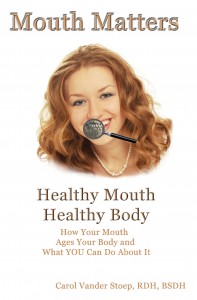 Through more than two decades of clinical experience, looking into thousands of mouths, Carol came to see how oral hygiene’s marginal position in dentistry – and dentistry’s marginal position in preventive medicine – has kept us from understanding and appreciating the role oral care should play in our daily lives. Too few realize that the consequences of neglect go beyond teeth and gums, sweet breath and winning smiles. The mouth is the most exposed gateway to our bodies. What goes on within it or passes through it can have profound implications elsewhere, undermining overall health. It’s not just the poor or uneducated who suffer. Behind those shiny smiles of the rich and famous can lie inflamed sores, degenerative bone disease and all manner of focal infection. Extensive research and conversations with colleagues and clients alike only deepened Carol’s concerns – and convinced her of the need to carry her message beyond her clients and the confines of a dental office. She brings together the perspectives, stories, and knowledge she has acquired in Mouth Matters: Healthy Mouth, Healthy Body.
Through more than two decades of clinical experience, looking into thousands of mouths, Carol came to see how oral hygiene’s marginal position in dentistry – and dentistry’s marginal position in preventive medicine – has kept us from understanding and appreciating the role oral care should play in our daily lives. Too few realize that the consequences of neglect go beyond teeth and gums, sweet breath and winning smiles. The mouth is the most exposed gateway to our bodies. What goes on within it or passes through it can have profound implications elsewhere, undermining overall health. It’s not just the poor or uneducated who suffer. Behind those shiny smiles of the rich and famous can lie inflamed sores, degenerative bone disease and all manner of focal infection. Extensive research and conversations with colleagues and clients alike only deepened Carol’s concerns – and convinced her of the need to carry her message beyond her clients and the confines of a dental office. She brings together the perspectives, stories, and knowledge she has acquired in Mouth Matters: Healthy Mouth, Healthy Body.


